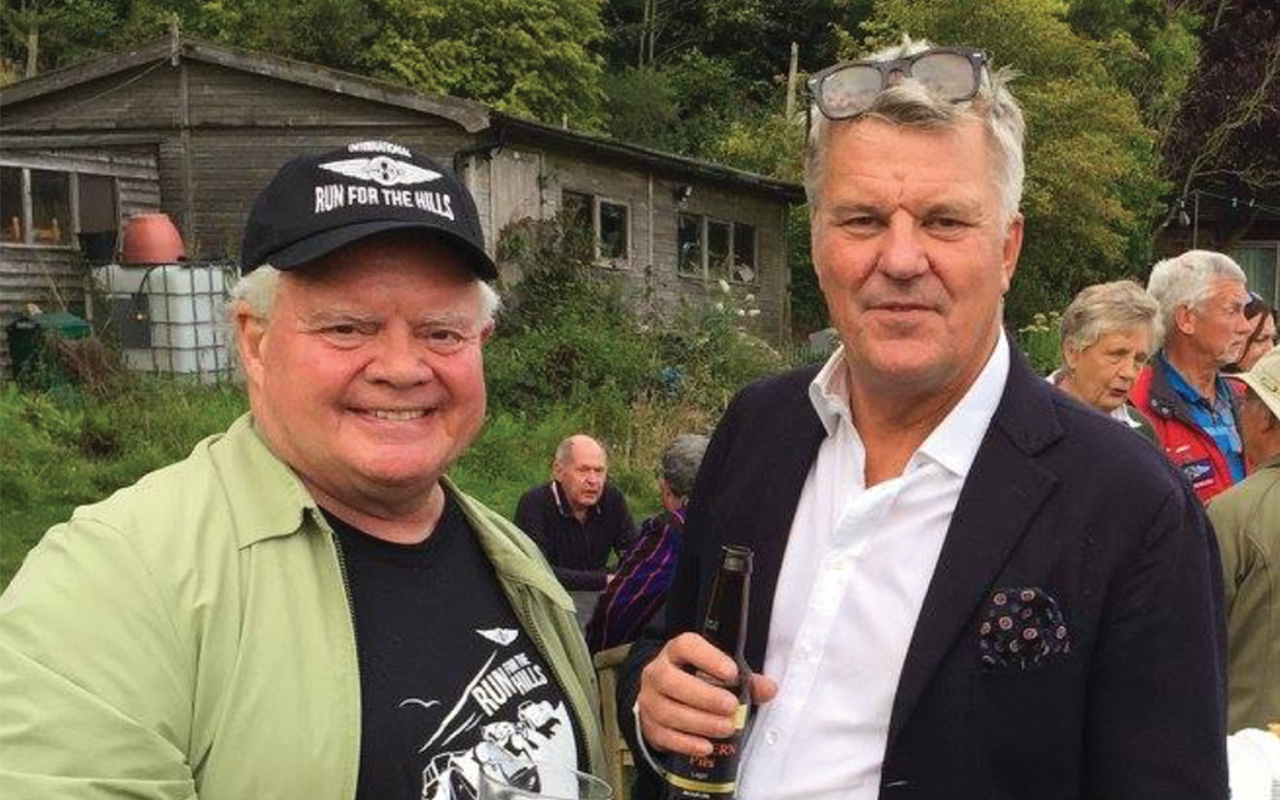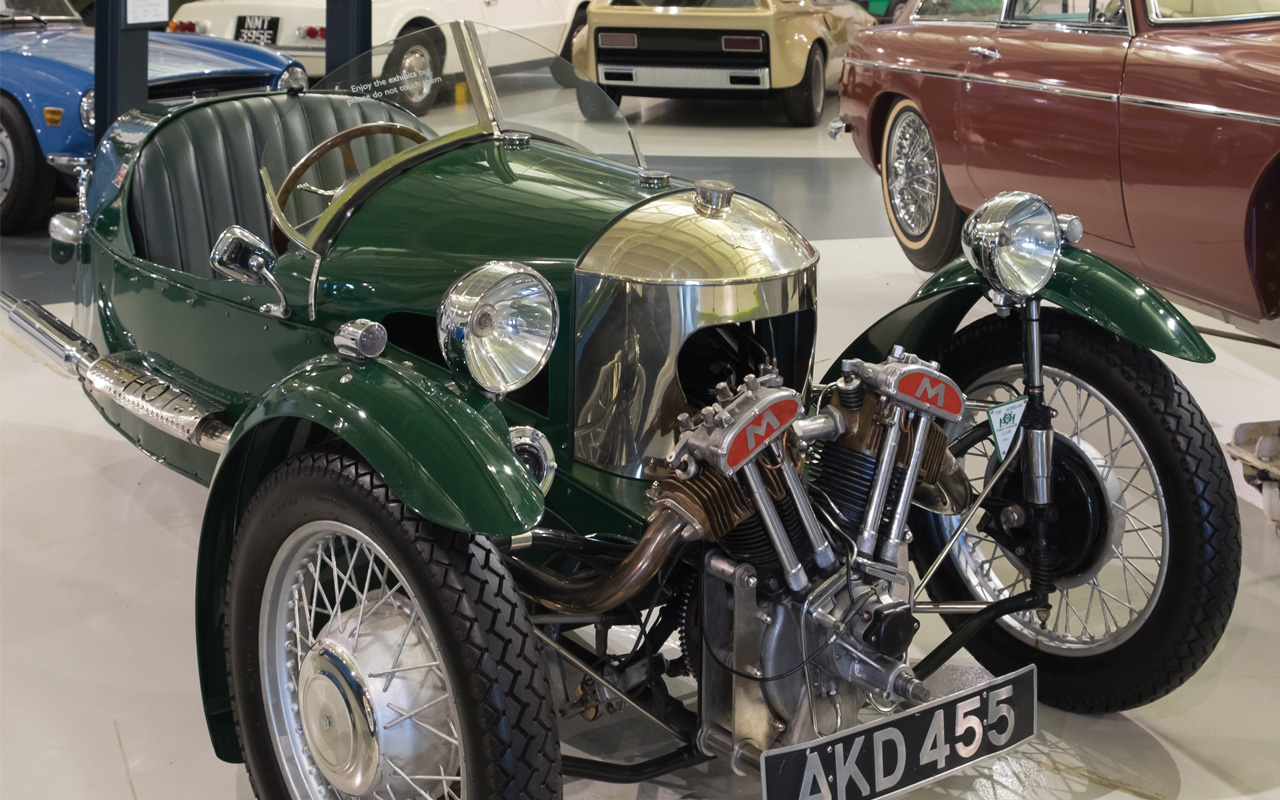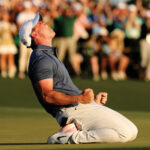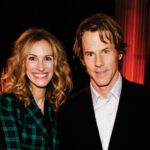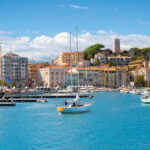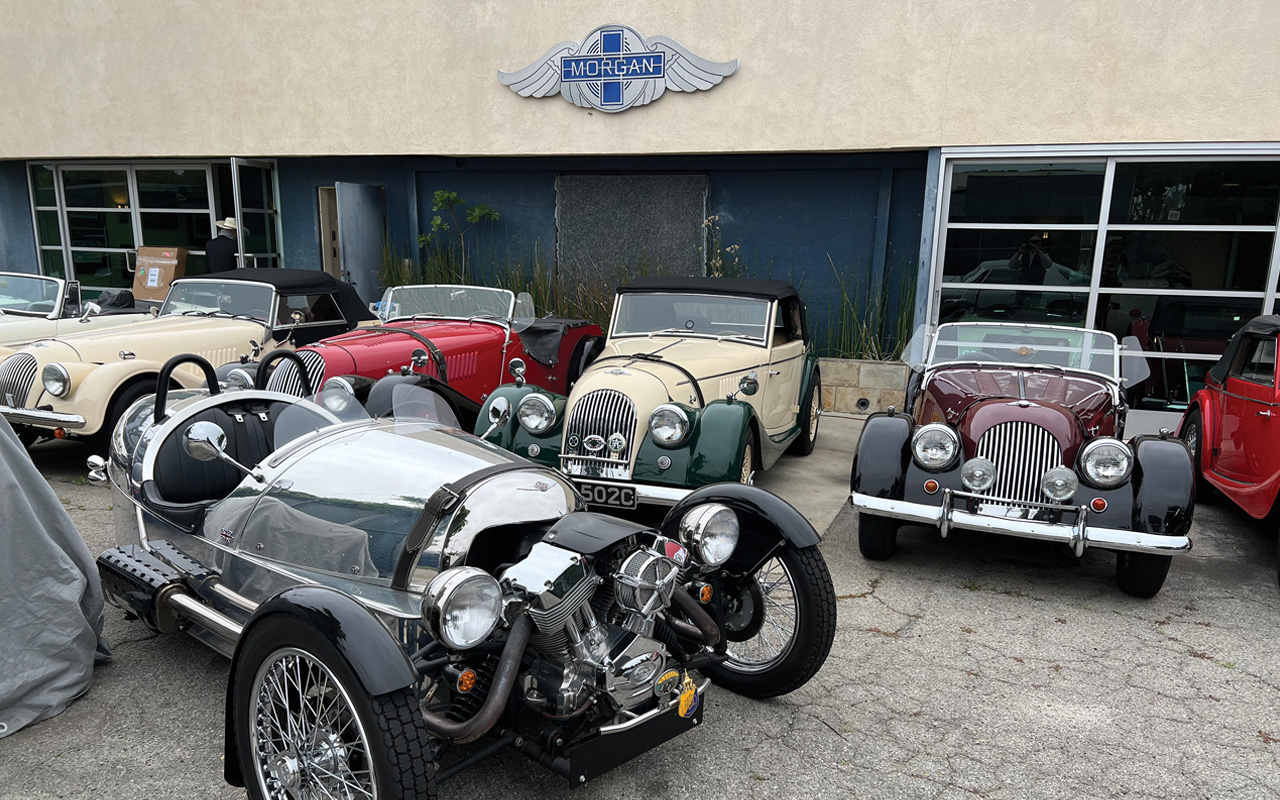
MorganWest vintage and new
H.F.S. (Henry) Morgan quit the Great Western Railway in 1904 to create a sales and service shop in Malvern Link to support the growing number of motorists filling the local lanes. By 1909 he had created one for himself. The road system was suffering from the proliferation of more powerful drive wheels so the Vehicle Excise Duty dating from 1888 became a motor tax, formulated using an engine’s bore and number of cylinders. There was a proliferation of V-twin motorcycle engines finding their way into lightweight 3-cylinder “cycle-cars”. Morgan’s creation put a John Alfred Prestwich (J.A.P.) ohv V-twin engine transversely between the independently sprung front wheels and drove a single rear wheel through a gearbox by chain. Keeping the taxable horsepower under 10 (typically 30-40 torque horsepower) and the vehicle’s weight near a half ton – made for an automobile for sport. Henry’s new “sports car” drew so much attention in competition that he put it into production in a small facility on Worcester Road, Malvern Link, a place he called Morgan Motor Company; it was 1910.
By 1912 HFS had won the Cyclecar Grand Prix at Amiens in France among a host of successes. The details of that car became the Grand Prix production model from 1913 to 1926. Competition improved both marketing and engineering.
In 1935 Morgan Motor Company began producing a 4-cylinder, 4-wheel light car called the 4/4. It also expanded the market and the trophy case.
Dennis Glavis and Peter Morgan
The first Morgan to compete in the 24 Hours of Le Mans was commissioned by Miss Prudence Marjorie Fawcett. Shortly after finishing school, she moved to Italy and became associated with some well-established motorists and subsequently began racing an Alfa Romeo. Upon returning to Great Britain, she partnered with friends to create the Winter Garden Garage where they serviced and sold several popular sports cars including, at her direction, Alfa Romeo. They soon included Morgan and the sporting records of the Morgan Motor Company intrigued her. She commissioned a 4/4 early in 1938 and suggested to Henry Morgan that she would like to enter it in the 24-hour race in France. The founder had his Climax-powered personal car modified for the endurance contest and loaned it to the 25-year-old Miss Fawcett. She asked Winter Garden sales manager Geoffrey White to come along as her pit manager and co-driver in the June 1938 event. Fawcett finished 2nd in her class and 13th overall, out of 43 cars. She agreed to stop racing if her new avid pilot husband would give up flying — and so the brief racing history of the imprudent Miss Fawcett ended.
Mrs. Marjorie Fawcett reentered her car in the 1939 Le Mans where it finished 15th overall in the hands of Geoffrey White and Cuthbert Marc Anthony.
Dennis Glavis had wanted a Morgan since discovering them while he was in high school, but somehow always wound up with something else. In college it was a ’53 Porsche 356 Cabriolet. Finally, after graduating from the University of Hawai’I Mānoa, and six months of Mexican adventures with a camper and a dog, he put the money together for a Morgan and made his way to Fergus Motors in New York City with a budget of $3,000. Walking into the showroom he found only one mustard yellow Super Sport with a sign reading, “The last new Super Sport we will ever receive, list $3,000, our price $4,600.” He bought a Saab Sonnett 850 Monte Carlo.
Having reestablished himself near Santa Cruz, California by 1972, he took another look at Porsche; pen in hand to sign a purchase contract for a ’71 911T, he stood, tore up the contract and drove to Mt. View, to buy a ’63 Morgan Plus 4 he had looked at the day before. It was all over! Dennis Glavis had become —in his words— “A Mogman forever more!”
2021 Morgan Plus Four at home
Over the next 4 decades, Glavis personally owned some 14 Morgans and sold perhaps a few hundred during his 25-year stint at Ferrari of Los Gatos, helping to keep the Morgan spirit alive in America. Driving his ’53 Flatrad 4/4, “The Flying Haggis” in the Carrera PanAmericana 3 times and showing his various cars in many different Northern California Concours d’Elegance, he slalomed them, rallied them and became an avid member of the Morgan Sportscar Club of Northern California. He served as Club President twice, Club Newsletter Editor for 5 years and Events Chairperson for 4 more. In 1998, realizing that the 90th Anniversary of the Morgan Motor Company was impending, he organized a Morgan Class for the 1999 Pebble Beach Concours d’Elegance, along with a banquet dinner for some 186 Morganeers from countries all over the world. He was honored to be weeklong host to Peter Morgan.
In December of 2001, Dennis was contacted by Matthew Parkin, Marketing Director of the Morgan Motor Company, calling from Florida, announcing that he would be in Los Gatos the next morning! After a day of Morgan conversation, Mexican food and pub hopping, Dennis was asked to become the new Morgan agent for Southern California. It was a dream come true.
Thus, we have the creation of MorganWest, a Morgan enthusiast’s dream, serving the Morgan community and those soon to join the Morgan life. Parkin said:
“It is our hope to establish the glory and the joy so long associated with the Morgan marque to North America. Other agents have bravely carried the flag for so long, down a hard and winding road. Now there’s a little (or a lot) of help from their friends.” And there are many, and the devotion to HFS Morgan and his story is profound.
1935 Super Sports

